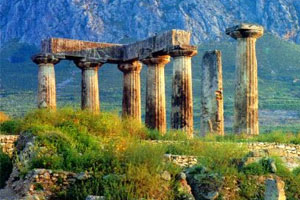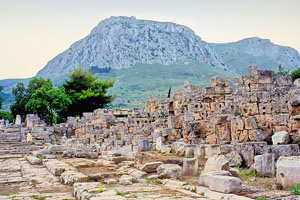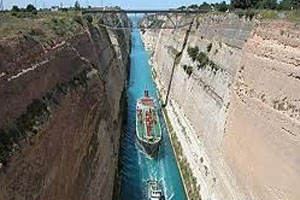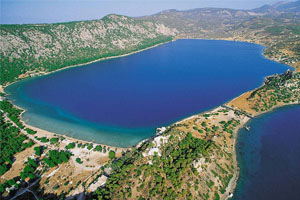Travel
Visit the archaeological site of Ancient Corinth
At the entrance you will see the ancient temple of Apollo, built in 450 BC and near the temple you will see the Peirene Fountain where the girls used to fill their jugs with water.
In the 5th century AD, Corinthians built their theatre which was converted into an arena by the Romans. It had a seating capacity of 15000 people. Also you will see the Odeon (capacity of 3000 people) that was destroyed by a fire in 20 AD.
Apostle Paul preached Christ – the new God of love-on the podium of public speeches to Corinthians. You will also see Asklepion, Lerna springs and the Gymnasium of Corinth.
Inside the museum you can admire the exhibits from the Neolithic period to the Middle Ages period.

Visit Acrocorinth
King Sisyphus resolved the problem of water scarcity in the region of Corinth when he asked the river god Asopus to offer him a spring in order to reveal to him the secret location where god Zeus kept Asopus daughter Aegina after he had taken her away from him.
Walk up to the highest summit of the hill to enjoy the breathtaking view, a view that has been admired by many visitors for thousands of years now.

Canal-Isthmia
The first visit will be to the historic canal which took 10 years to be constructed (1882-1893).
In the east of the canal, you will meet Isthmia area (museum and archaeological site). There, you will see the ruins of Poseidon temple, the ancient stadium, the ancient theater and the Roman public baths (for anyone who wanted to take part in the rituals).
Athletic games were held in the second and the fourth year of an Olympiad, only for men, in honor of the god-child Palaimon. If you happen to go there, carry a pine sprig with you to leave at this place where Greeks used to worship their unfairly–lost child.
In the museum you will see items from the games and 87 artistic paintings Opus Sectile dating back to the 4th century AD (the only museum in Greece that has this kind of paintings among its exhibits). These paintings were transported from Italy to Kechrees in a ship. A terrible earthquake in 375 AD, had the ship sunk in the harbor and destroyed many buildings, dragging the boxes with the precious paintings at the bottom of the sea. They remained in their watery grave for many centuries until they were discovered by archaeologists in 1976.

Loutraki-Perachora-Vouliagmeni Lagoon
4 Km after the canal you can visit the cosmopolitan Loutraki, where every year, thousands of visitors enjoy their swim in the sea or their bath in the thermal springs.
Halfway towards Perachora, the monastery of St. Patapios (11th century AD) is “pinned” on the Gerania mountain. The relics of St. Patapios, St. Nikon and St. Ypomoni (Patience) were found there. The temple was built by the Emperor Katakouzinos in 1345 while the church of St. John the Baptist was built in 1886.
After the village of Perachora you will find Vouliagmeni lagoon, a lagoon of exquisite beauty. The area there has been inhabited since 3000 BC. After you enjoy your swim, you can visit Cape Heraion in the west of the lake with the tallest lighthouse on the Corinthian gulf, and the temple of goddess Hera.

|

